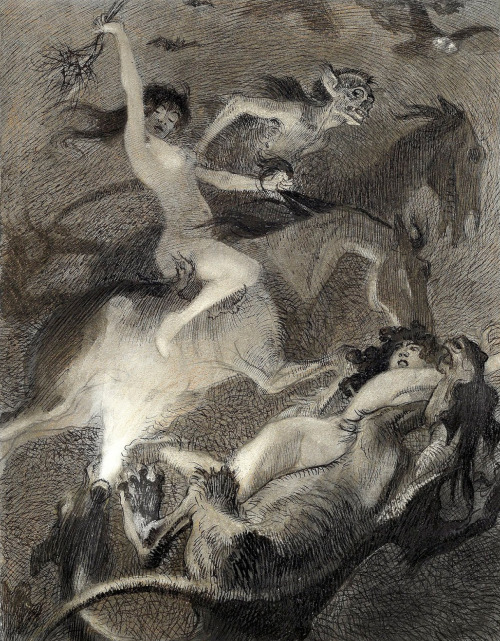Latest Posts by velumnoctis - Page 3

Clearest image of Venus, taken by Japan's Akatsuki Venus Climate Orbiter.

𝘈 𝘩𝘢𝘯𝘥-𝘱𝘳𝘪𝘯𝘵𝘦𝘥 𝘸𝘰𝘰𝘥𝘤𝘶𝘵 𝘪𝘭𝘭𝘶𝘴𝘵𝘳𝘢𝘵𝘪𝘰𝘯 𝘰𝘧 𝘵𝘩𝘦 𝘻𝘰𝘥𝘪𝘢𝘤, 𝘱𝘳𝘰𝘥𝘶𝘤𝘦𝘥 𝘪𝘯 𝘌𝘶𝘳𝘰𝘱𝘦 𝘥𝘶𝘳𝘪𝘯𝘨 𝘵𝘩𝘦 15𝘵𝘩 𝘤𝘦𝘯𝘵𝘶𝘳𝘺.
“𝖳𝗁𝖾 𝗓𝗈𝖽𝗂𝖺𝖼 𝖼𝗈𝗇𝖼𝖾𝗉𝗍 𝗈𝗋𝗂𝗀𝗂𝗇𝖺𝗍𝖾𝖽 𝗂𝗇 𝖬𝖾𝗌𝗈𝗉𝗈𝗍𝖺𝗆𝗂𝖺, 𝖾𝗏𝗈𝗅𝗏𝗂𝗇𝗀 𝗍𝗁𝗋𝗈𝗎𝗀𝗁 𝖦𝗋𝖾𝖾𝗄 𝖺𝗇𝖽 𝖱𝗈𝗆𝖺𝗇 𝗌𝖼𝗁𝗈𝗅𝖺𝗋𝗌𝗁𝗂𝗉 𝖻𝖾𝖿𝗈𝗋𝖾 𝗋𝖾𝖺𝖼𝗁𝗂𝗇𝗀 𝗆𝖾𝖽𝗂𝖾𝗏𝖺𝗅 𝖤𝗎𝗋𝗈𝗉𝖾. 𝖡𝗒 𝗍𝗁𝖾 𝟣𝟧𝗍𝗁 𝖼𝖾𝗇𝗍𝗎𝗋𝗒, 𝗍𝗁𝖾 𝖽𝗂𝗌𝗌𝖾𝗆𝗂𝗇𝖺𝗍𝗂𝗈𝗇 𝗈𝖿 𝗉𝗋𝗂𝗇𝗍𝖾𝖽 𝗆𝖺𝗍𝖾𝗋𝗂𝖺𝗅𝗌 𝖺𝗅𝗅𝗈𝗐𝖾𝖽 𝖼𝗁𝖺𝗋𝗍𝗌 𝗅𝗂𝗄𝖾 𝗍𝗁𝗂𝗌 𝗈𝗇𝖾 𝗍𝗈 𝗋𝖾𝖺𝖼𝗁 𝖺 𝖻𝗋𝗈𝖺𝖽𝖾𝗋 𝖺𝗎𝖽𝗂𝖾𝗇𝖼𝖾. 𝖠𝗌𝗍𝗋𝗈𝗅𝗈𝗀𝖾𝗋𝗌 𝖺𝗇𝖽 𝗌𝖼𝗁𝗈𝗅𝖺𝗋𝗌 𝖼𝗈𝗇𝗌𝗎𝗅𝗍𝖾𝖽 𝗍𝗁𝖾𝗆 𝖺𝗌 𝖺𝗂𝖽𝗌 𝗂𝗇 𝗂𝗇𝗍𝖾𝗋𝗉𝗋𝖾𝗍𝗂𝗇𝗀 𝗍𝗁𝖾 𝖧𝖾𝖺𝗏𝖾𝗇, 𝗐𝗁𝗂𝗅𝖾 𝖺𝗋𝗍𝗂𝗌𝗍𝗌 𝖺𝗇𝖽 𝗉𝗋𝗂𝗇𝗍𝖾𝗋𝗌 𝗋𝖾𝖿𝗂𝗇𝖾𝖽 𝗍𝗁𝖾𝗂𝗋 𝗍𝖾𝖼𝗁𝗇𝗂𝗊𝗎𝖾𝗌 𝗍𝗈 𝖼𝗋𝖾𝖺𝗍𝖾 𝗆𝗈𝗋𝖾 𝖺𝖼𝖼𝗎𝗋𝖺𝗍𝖾 𝖺𝗇𝖽 𝗏𝗂𝗌𝗎𝖺𝗅𝗅𝗒 𝖺𝗉𝗉𝖾𝖺𝗅𝗂𝗇𝗀 𝗐𝗈𝗋𝗄. 𝖮𝗏𝖾𝗋 𝗍𝗂𝗆𝖾, 𝗍𝗁𝖾 𝗓𝗈𝖽𝗂𝖺𝖼 𝖻𝖾𝖼𝖺𝗆𝖾 𝖾𝗆𝖻𝖾𝖽𝖽𝖾𝖽 𝗂𝗇 𝖼𝗎𝗅𝗍𝗎𝗋𝖺𝗅 𝗉𝗋𝖺𝖼𝗍𝗂𝖼𝖾𝗌, 𝗂𝗇𝖿𝗅𝗎𝖾𝗇𝖼𝗂𝗇𝗀 𝖼𝖺𝗅𝖾𝗇𝖽𝖺𝗋𝗌, 𝖺𝗀𝗋𝗂𝖼𝗎𝗅𝗍𝗎𝗋𝖺𝗅 𝗉𝗅𝖺𝗇𝗇𝗂𝗇𝗀 𝖺𝗇𝖽 𝖾𝗏𝖾𝗇 𝖺𝗋𝖼𝗁𝗂𝗍𝖾𝖼𝗍𝗎𝗋𝖺𝗅 𝗈𝗋𝗇𝖺𝗆𝖾𝗇𝗍𝖺𝗍𝗂𝗈𝗇.”
ᴠɪᴀ ᴀʀᴄʜᴇᴏʟᴏɢʏᴀʀᴛ

𝔱𝔦𝔱𝔩𝔢: “Photography of St. Sebastian’s Cathedral” 𝔟𝓎 Klim Musalimov // 𝔳𝔢𝔯𝔰𝔦𝔬𝔫: b+w

“Aries,” dragon with mustard blossom and bone. Linoleum block print for my April Patreon reward

Walpurgisnacht by Heinrich Kley (1923)

Sergey Solomko (1867–1928) - Walpurgis Night

Silver Cup with depictions of the goddess Freya (1000 AD),
From the Viking hoard found in Lejre in 1850.
National Museum of Copenhagen, Denmark

Sword, Southern Germany, 1st half of the 16th century
from The Museum of Art and History Geneva
“Don't bend; don't water it down; don't try to make it logical; don't edit your own soul according to the fashion. Rather, follow your most intense obsessions mercilessly.” ― Franz Kafka

Architectural plan for the Singertor vestibule of St. Stephen’s Cathedral, Vienna, by Laurenz Spenning, ca. 1454-1477
That […] mixture of sensuality and cruelty which has always seemed to me to be the real “witches’ brew.”
— Friedrich Nietzsche, The Medusa Reader, transl by Walter Kaufmann, (2013)

David Herrerias “Endor´s witch in Νεκρομαντεῖον (Nekromanteion)”
~
The Nekromanteion (Greek: Νεκρομαντεῖον) was an ancient Greek temple of necromancy devoted to Hades and Persephone.
According to tradition, it was located on the banks of the Acheron river in Epirus, near the ancient city of Ephyra. This site was believed by devotees to be the door to Hades, the realm of the dead.

The World’s First Female Author, Enhedu’anna
This ancient clay tablet from Babylonia is inscribed in Sumerian cuneiform and dates to the 20th-17th centuries BC. It mentions King Sargon’s daughter Enhedu'anna as the author of a hymn to the goddess Inanna. The tablet has lines written first by the teacher in the first column, with 2 students repeating the hymn in columns 2 and 3.
Enhedu’anna was the daughter of King Sargon of Akkad (2334-2279 BC), founder of the first documented empire in Asia. Enhedu’anna emerges as a genuine creative talent, a poetess as well as a princess, a priestess and a prophetess. She is, in fact, the first named, non-legendary author in history. As such she has found her way into contemporary anthologies, especially of women’s literature.



















